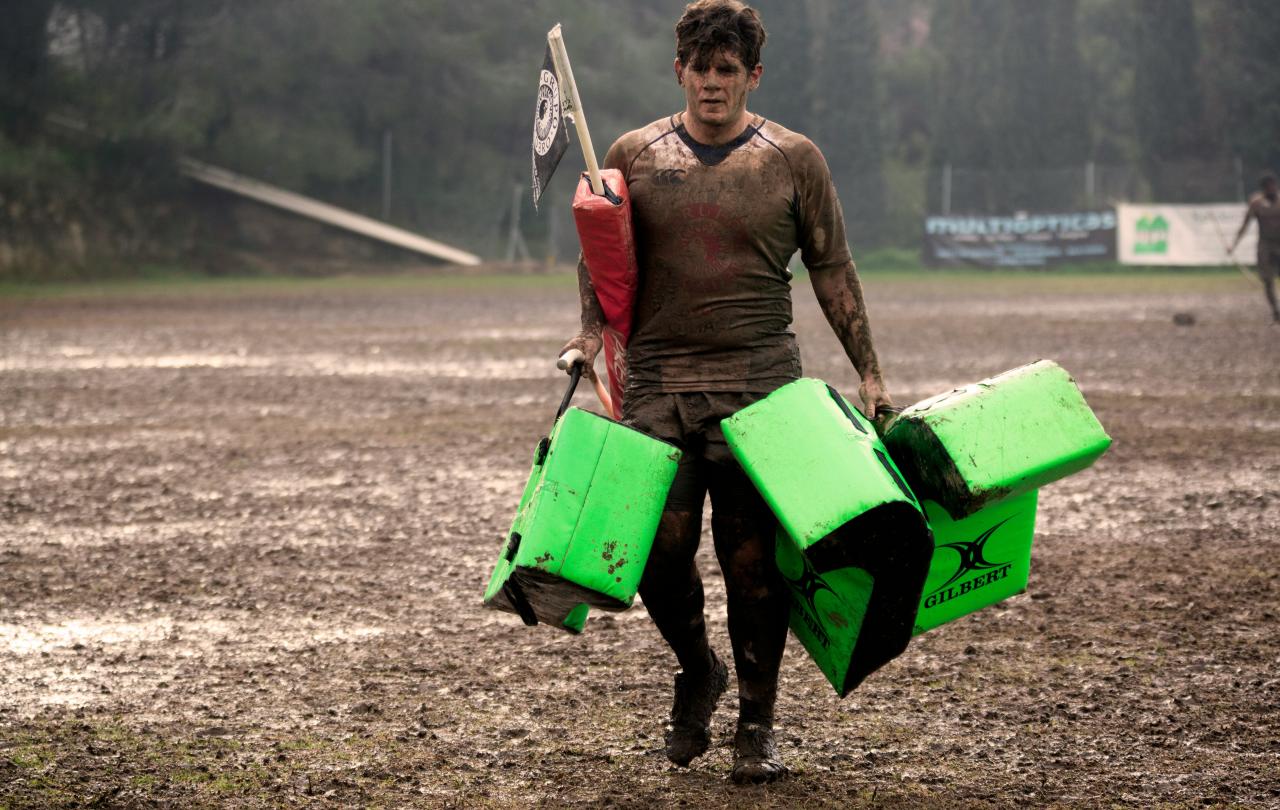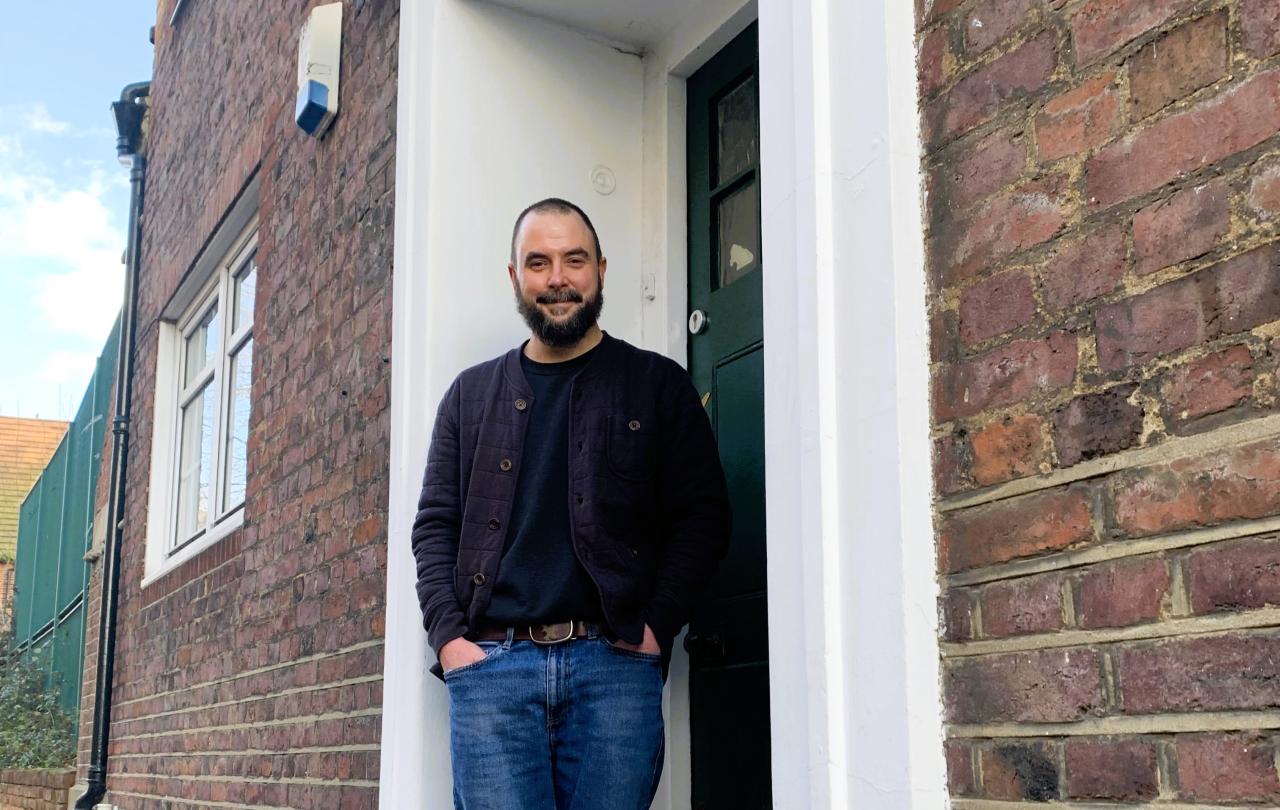
It’s a Tuesday evening and I’ve got my face in the dirt, as usual.
About two years ago I rejoined a local rugby team for the first time since I was a teenager, and this is the result, a particularly brutal training exercise involving press ups, tackle bags, intricate running patterns, and repetitive sets. The coaches push us hard on a Tuesday so that by Saturday we can perform the same tasks at a slower speed than we knock them out in training.
Although there are the occasional jokes about the coaches’ sadistic temperaments, there is no complaining or easing off. We’re locked in on the pain of preparation for the real thing.
It’s obvious to list the individual benefits the training brings; remembering I have a body after a long day pastoring people’s spiritual needs, physical fitness, strength and conditioning. Even if these benefits seem outweighed when you get bashed up! But I have noticed that nobody is motivated primarily by these. It is the ability to be there for your mate that motivates the lads to be gluttons for punishment, the need to be fit enough to do the dirty work so the team can succeed.
At almost any time in a game of rugby, half the team are doing things that you don’t see. There is almost no glory in playing in certain positions, you never make highlights reels or win player-of-the-match. Your only success is the team’s success. No perfect bind on a scrum, well timed clear out at a ruck, or perfect positioning in defence ever makes a highlights reel.
Dan Cole is a bit of a local hero in my patch, playing over three hundred times for my team, the Leicester Tigers, and winning well over a hundred caps for England, third on the all-time list. Because of his position, playing prop, and his particular skillset, he is famous for almost never being noticed, he has scored just four international tries and never, as far as I could see, been named man-of-the-match. In fact, he was widely teased by teammates and opponents for daring to score a try for Tigers over the Christmas period. (He shoved the ball over from a yard out- not a glorious finish).
Cole doesn’t trundle around the rugby pitch for his own glory, but understands that the best gift he can give is to prefer the team to himself, doing those quiet, unseen bits of the game he excels at. After all, you don’t win all those caps without being good at something, even if most of us don’t even notice what it is.
Nothing tests my ability to die to self than when I’m flat on my back after tackling or being tackled and I need to spring up.
When I was thinking of getting back into playing, I wondered when I opened the clubhouse door, what I would find. Within half an hour of my first session I had joined the band of brothers, nicknamed ‘Rev’ forever, expected immediately to grasp the objective of working for others just as they worked for me, despite being a newbie who spent most of the time getting in the way.
Because of this, I have found the two parts of my life - trainee priest and distinctly average rugby player - to fit neatly together. What I preach in the pulpit on a Sunday and try to demonstrate throughout the week about the spiritual life is demanded from my physicality on a Saturday afternoon. Jesus called his disciples to die to their own desires so that they could better serve the needs of others: with the kicker being that in this service, true joy, happiness and contentment will be found.
This is perhaps the heart of the Christian message, that loving, genuine, service of others is so close to God’s heart that it is impossible not to find wholeness in living this way. It seems to be a lesson that has been unconsciously heeded in the sport I play; nothing tests my ability to die to self than when I’m flat on my back after tackling or being tackled and I need to spring up quickly for the next phase of the game. Or chasing the play from one end of the field to another at the end of the game to get back into the line to defend. Or a man mountain running at you with the ball, and you’re desperate not to let your end of the bargain down with your teammates by failing to tackle him.
No doubt the language for thinking about these self-sacrifices for the team given to me by my faith is helpful. But I have found the opposite to be true too. Having experienced the joy of this service to my teammates, it strengthens the value of putting my own desires aside for the good of those who need my support. When at inconvenient times family members, friends, or congregants need a meal, a visit, some advocacy, or simply to be listened to, my spirit has been strengthened for this work by the experience of playing rugby and being part of a team.
The spiritual training I undertake; reading the Bible, prayer, and confession, and the physical training; those beastly Tuesday evening sessions, are all preparation for making the choice of sacrifice over selfishness in the moments when it counts, on and off the pitch. My body and soul are learning the same lessons from multiple sources and coming to the same conclusion: serving teammates- on the rugby pitch and in life- is the way to contentment. Even more so if we find some of those teammates hard to love.
As the Six Nations rolls round again this weekend, we will see plenty of skill and flair from the players in certain positions who have certain gifts. But watch closely, and those players whose work you cannot see are the crucial cogs in the machine which the flair players gloss. Those unseen players, doing unseen work, teach the truth of a content life, whether they know it or not.
Join with us - Behind the Seen
Seen & Unseen is free for everyone and is made possible through the generosity of our amazing community of supporters.
If you’re enjoying Seen & Unseen, would you consider making a gift towards our work?
Alongside other benefits (book discounts etc.), you’ll receive an extra fortnightly email from me sharing what I’m reading and my reflections on the ideas that are shaping our times.
Graham Tomlin
Editor-in-Chief





